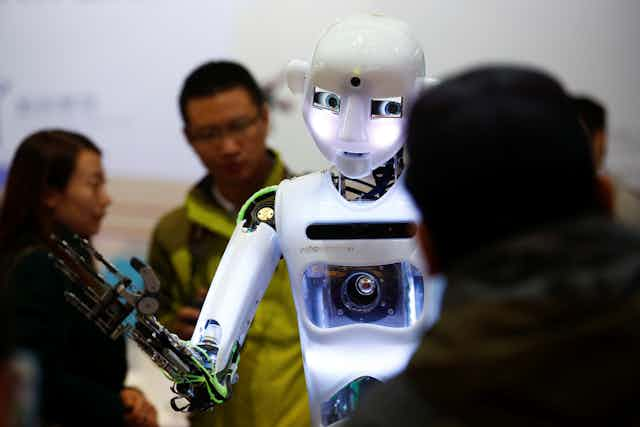When you call up a business, you might get an automated customer service giving you options and helping you to do whatever it is you need to. This is a digital robot.
It’s common to see digital robots in these types of roles because the technology is getting cheaper and better, says Mary-Anne Williams, founder and director at UTS’ Innovation and Enterprise Research Lab.
Williams researches how humans interact with different types of robots, in customer service roles. She says because digital robots can access vast amounts of data about certain customers, these bots can provide a more specialised and customised service, similar to that of the good old days.
People have fewer problems dealing with digital robots than humans because machines don’t make emotional or ethical judgements about customers that make them uncomfortable.
However, when it comes to physical robots in customer service roles, our reactions can be very different. In research on these robots, there is a concept called “the uncanny valley”. This is where the closer the robot is to human form or face, the more uncomfortable or eerie we feel. So there’s that to overcome.
Experiments students at Williams’ lab have conducted in a shopping mall show that these physical robots have to work hard to attract our attention and we’re easily underwhelmed by them, compared to the ones we see on TV or movie screens.
The next big frontier for physical robots in business is to get them to empathise with customers, to understand the context around questions and interactions. And with the speed of innovation, this may be closer than we think, Williams says.
The business briefing podcast will return with a new format in 2017. If you’ve got any feedback you’d like to pass on, please email it to: ask@theconversation.edu.au

